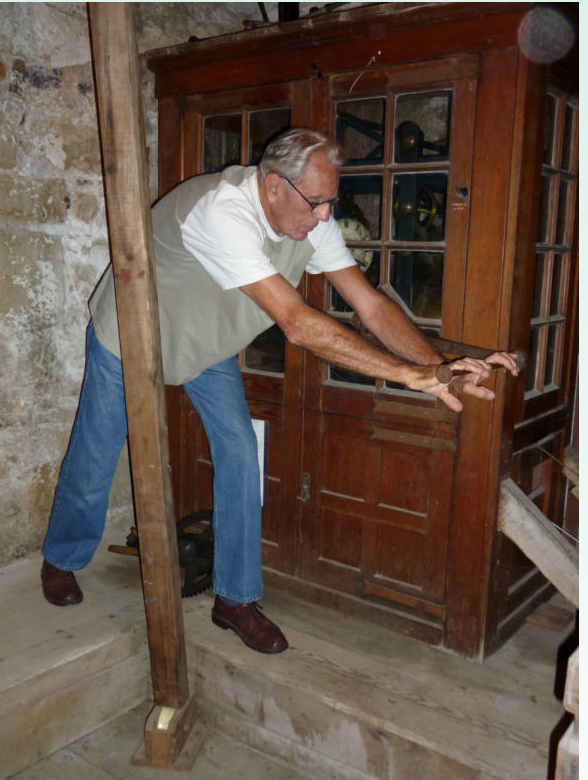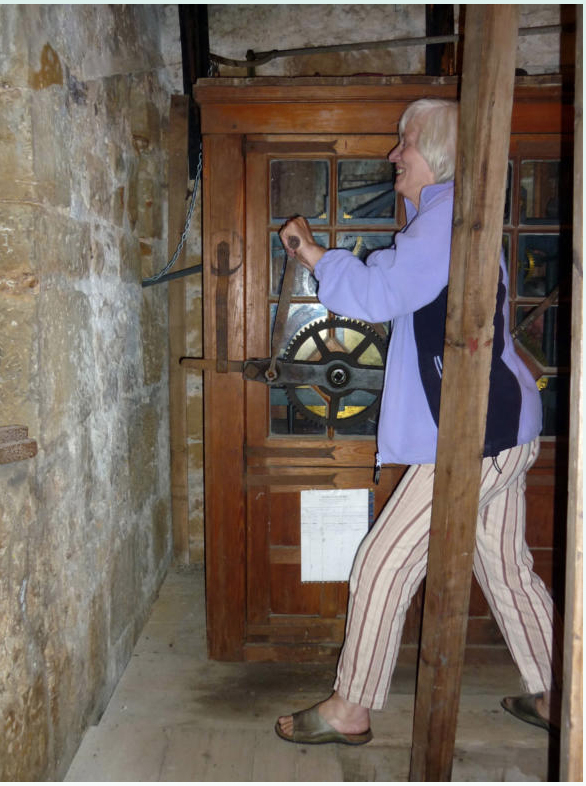Bell Ringing
Bell Ringing & The Bell Tower
Bells have been rung for centuries to herald special events, to warn of invasion, fire and flood, to notify people of death and disaster, but mainly they have been rung to call people to worship or in celebration of weddings, festivals and anniversaries, and they are rung to welcome in each New Year.
St Mary’s Church has had bells since 1542 and the present ring of 6 bells were all cast by the same founder, Thomas Janaway in 1771. Each bell has an inscription and they are tuned to the key of F#; the tenor weighs 15cwt (762 kg).
In 1901, the bells were re-hung in a metal frame and in 1950 they were taken down, re-tuned and hung with self-aligning ball bearings.

Change ringing began in Britain over 300 years ago and it is only in the British Isles and at a few towers in English speaking countries that bells are rung in this way. By fixing a wheel to the headstock of the bell and then tying the rope to the spokes, passing it through a hole in the rim of the wheel and then running the rope around the rim, it became possible to control the bell. It could be raised to the upside-down position and swung through 360 degrees until it was upside-down again and then swung back 360 degrees the other way.
The speed of ringing could be controlled by varying the length of pull on the rope, causing the bell to travel through a larger or smaller arc. It also allowed the bell to be held on the balance in the upside-down position for a moment giving time for bells to change place in the round.
A wooden stay was fitted so that the bell could be rested when upside-down against a sliding stop. If the rope is pulled too hard this can be broken, the bell rolls right over and the ringer is raised from the floor. (The old bell ringing joke – very frightening and dangerous!)
Because bells can only change one place at a time it is not possible to play tunes, so methods were devised whereby the bells rang a numerical pattern, weaving in and out and dodging with one another. Methods with names like “Bob Doubles” and “Grandsire Triples” go back a long way in time.
Bell ringing is a fascinating hobby requiring skill, concentration and teamwork, an art that has been passed from generation to generation and is enjoyed by men and women of all ages and from all walks of life.If you would like to learn how to ring the bells, come and join our regular Monday evening practices. Contact Andrew Cook 01580 200594.
The BellsThe bells are rung regularly at:
- 11 a.m. Sunday Services
- Weddings
- Monday evening practices
In addition, the bells are rung half-muffled on Remembrance Sunday and very occasionally at funerals. Click here to hear the muffled bells.
In 1990 there were changes at St Mary’s that involved creating the bell ringing floor which is now the ceiling of the newly created choir vestry at the west end of the church, and the steps up to the bell ringing floor were given new stone treads.
Before 1990, the bells were rung from the level of the main church. When the bell ringing floor was added the bell ringers began using the shorter length of rope to ring. This has made ringing a little easier – or at least less difficult!
All our bell ringers are members of the Sussex County Association of Change Ringers. Their website has information including a potted history of ringing in Sussex. There is a wealth of general information about bell ringing on the central council of church bell ringers website.
St Mary’s Church – the Clock
The clock was built in 1835 and is wound up every Monday. The tenor bell is the bell that chimes each hour.


St Augustine’s Church
St Augustine’s church has 4 bells but just one of these is now able to be rung. It has plain bearings.
